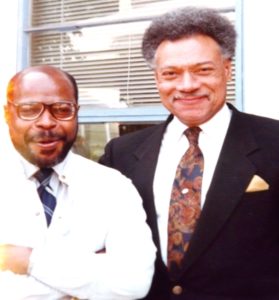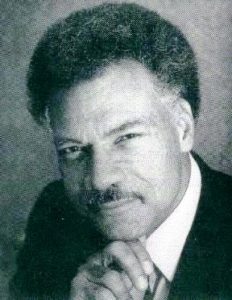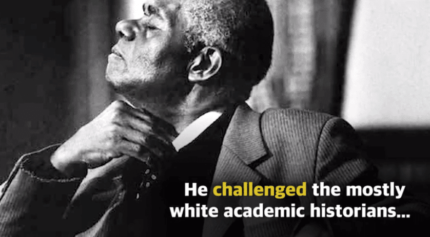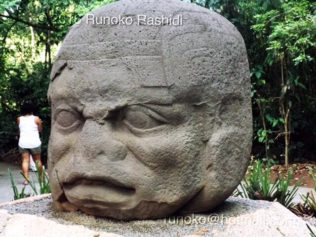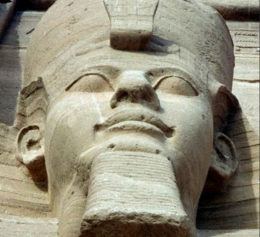BY RUNOKO RASHIDI
I first met Ivan Van Sertima in either late 1980 or 1981. I went to a lecture that he gave in a classroom at UCLA. An evening or so later, I attended a reception in his honor at the residence of Legrand H. Clegg II, noted authority of African and American history and culture. The lecture was about the African presence in America before Columbus, and the reception gave us a chance to have an up- close interaction with Van Sertima.
He was a light-skinned Black man of medium build. He wore a jacket and tie. He was clean-shaven except for a mustache and wore a short Afro. He spoke with a distinct British accent. I was honored to be in his presence. He seemed rather detached and aloof, but you could tell that he was a great scholar. And he really seemed to appreciate the ladies!
It was around this same time that I quit my job with a mortgage company and started working in the Extended Opportunity Program and Services (EOPS) department at Compton Community College. My job was to organize cultural awareness programs designed to expose the students and the community in Compton to things African. I believe that Ivan was our first speaker. Among the other early speakers that I brought to Compton at that time were political activist Kwame Ture (formerly Stokely Carmichael) and the great cultural historian John G. Jackson.
Another person that I got to know during those early days at Compton College was Egyptian scholar and author Dr. Charles S. Finch. Author and scholar Jan Carew who, like Ivan, was from Guyana, South America, and who was Ivan’s major mentor, I also invited in as a speaker. Jan even stayed at my apartment. But Ivan became our regular. He was a great orator and had a grand and commanding on stage presence. You know, I think a lot of it had to do with his British manners. Whatever the case, his speaking style and presence were clearly captivating.
Sometime in 1982, I started writing for Ivan. In 1977, his great book, “They Came Before Columbus” was published and in 1979, he began publication of the Journal of African Civilizations. How I began to write for the journal makes for a good story.
Legrand Clegg and I had driven down to San Diego to attend a program highlighted by Ivan and John Henrik Clarke, another wonderful scholar who I would get to know and develop an excellent personal relationship.
I remember that Ivan, Legrand, myself and a San Diego brother named Chuck Ambers, were parked in front of a liquor store talking about what spirits we were going to buy when Ivan asked no one in particular if anybody knew anybody who might know somebody if they knew anybody who had photographs of the people of ancient Iraq. He wanted to use the photos to illustrate a new issue of the journal. I had recently begun to study the subject, but did not say a word. Legrand Clegg, busy trying to promote me, pointed out immediately that Runoko Rashidi was just the man! Ivan looked at me as if to say, “Who, that guy?” He appeared to have no confidence at all at the suggestion and seemed extremely dubious. But Legrand was persistent and Ivan relented. His parting words to me were, “Well just write a few words and send in the photos.”
He later told me that the photos were actually terrible, but that the article that I wrote was very good and he was impressed with my style. (I wonder what he would say about my photos now?) From that day on, I held him in awe and wrote for all the journals from 1982 to the last one in 1995.
Just about at that time, the Journal of African Civilizations ceased to be a journal per se and became a book that was published two or three times a year. The first was Egyptian History Revised and the second one was Black Women in Antiquity. He published my first article in the former and my second (an even larger essay) was published in the latter. By this time I could see that the respect that he had for me and the confidence that he had in me was beginning to grow immeasurably, for in the Black Women in Antiquity anthology, he not only published an article of mine on African goddesses, but I also helped him edit some of the book. He was extremely grateful and at this point we actually began to be something approaching confidants and friends.
You know, with Ivan’s transition ( I could not write the “d” word), it seems almost like I have lost my bridge to those early years and those scholars who mentored and influenced me at that pivotal stage in my life. Little by little and one by one they are all gone now, or just about gone. First Chancellor Williams and then John G. Jackson passed. Then Charles B. Copher and Edward Vivian Scobie and, especially John Henrik Clarke, joined the ancestors. Then Ivan got sick and Jacob H. Carruthers died. Shortly after that Nana Ekow Butweiku I became sick and died. William Mackey and Baba Donaldson died. And it seems like just yesterday that my friend Asa Hilliard made his transition.
Jan Carew is sick and Dr. Ben is in a nursing home in the Bronx. And now Ivan is gone. Kind of takes my breath away and puts a tear in my eye. I am so grateful for the fellowship that they provided and the mentoring that they gave. But, still, I miss them very much. It seems like the end of an era.
(WRITTEN IN MAY 2009 UPON HEARING OF THE TRANSITION OF IVAN VAN SERTIMA)
*Runoko Rashidi is a historian and research specialist, writer and tour leader based in Los Angeles and Paris. To get more information and travel with Runoko Rashidi contact him at [email protected] or please go to his web site at www.travelwithrunoko.com
